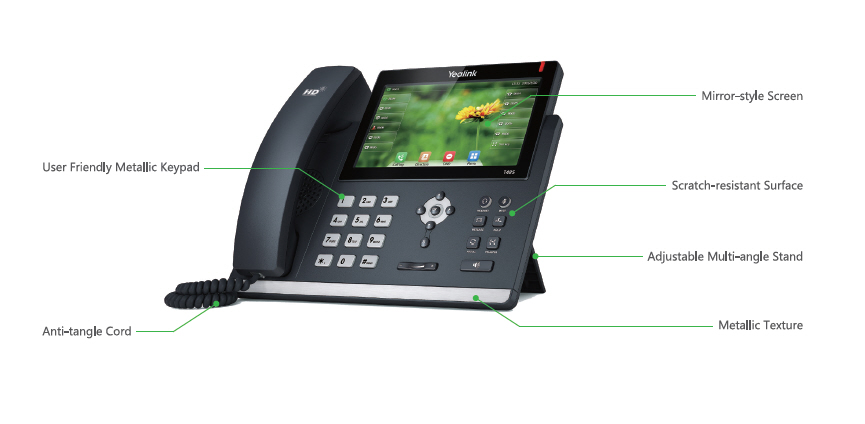VoIP Equipment Costs: What You Need to Factor In
When it comes to modern business communication, Voice over Internet Protocol (VoIP) has carved out a niche that’s hard to ignore. With its promise of lower costs and enhanced functionality, many companies are making the switch from traditional phone systems to VoIP phone service. However, one critical component often overlooked in this transition is the cost of the equipment itself. In this comprehensive guide, we'll dive deep into VoIP Equipment Costs: What You Need to Factor In, ensuring you have all the knowledge to make an informed decision.
Understanding VoIP Technology
What is VoIP?
VoIP stands for Voice over Internet Protocol, which essentially allows you to make voice calls using an internet connection instead of a traditional phone line. Think of it like sending an email rather than mailing a letter—it's quicker and often more cost-effective.
How Does VoIP Work?
VoIP converts your voice into digital data packets and transmits them over the internet. This technology is both innovative and efficient, allowing for features such as call forwarding, voicemail-to-email, and conference calls—all at a fraction of the cost of traditional phone services.
Benefits of Using VoIP Phone Service
Cost Savings: One of the greatest advantages is the reduced expense compared to traditional landlines. Flexibility: With VoIP, you can make calls from anywhere with an internet connection. Advanced Features: Enjoy features like video conferencing, virtual receptionist services, and more without extra charges.
VoIP Equipment Costs: What You Need to Factor In
When considering a switch to VoIP, understanding the associated equipment costs is crucial. Below are several key components that can impact your overall investment in VoIP technology.
1. Hardware Costs
VoIP Phones
The most obvious piece of hardware you'll need is a VoIP phone. These phones can range from budget models priced around $50 to high-end models costing over $500 each.
Adapters
If you plan on using existing analog phones with your new system, you'll need an Analog Telephone Adapter (ATA) which typically costs between $30 and $100.
Headsets
For those who prefer hands-free operation or work in call centers, headsets can enhance productivity. Expect to pay anywhere from $20 for basic models up to $300 for professional-grade options.
2. Software and Licensing Fees
VoIP Service Subscription
Most businesses will subscribe to a VoIP service provider that charges monthly fees ranging from $15 to $50 per user depending on features offered.
Additional Software Tools
Some companies may require additional software for specific functionalities such as CRM integration, which can incur additional costs.
3. Network Infrastructure Costs
Router Upgrades
To ensure smooth operation of your VoIP system, you may need a quality router capable of handling voice traffic effectively. These routers can range from $100 to $300.
Network Switches
For larger businesses with multiple devices connected, network switches become necessary. Depending on capacity and brand, they may cost between $50 and $500.
4. Installation Fees
While some businesses opt for DIY installation—particularly smaller setups—larger organizations might need professional installation services ranging from $100 up to several thousand dollars based on complexity.
5. Maintenance Costs
Just like any other tech equipment, your VoIP infrastructure will require ongoing maintenance and updates which could mean yearly expenses that add up quickly if not monitored carefully.
Hidden Costs in VoIP Implementation
You might be surprised by some hidden costs related to transitioning or maintaining a VoIP system:
Power Failures: Unlike traditional phones that work during power outages, VoIP requires electricity. Training: Staff may require training sessions for seamless operation. Bandwidth Requirements: Increasing bandwidth can lead to higher internet bills if not planned for adequately. Emergency Services Access: Ensure your setup complies with regulations regarding access to emergency services; sometimes this involves additional configuration costs.
Comparative Analysis of Traditional Phones vs. VoIP Phones
| Feature | Traditional Phones | VoIP Phones | |-----------------------------|--------------------|----------------------------| | Cost Per Call | Higher | Lower | | Flexibility | Limited | Highly flexible | | Additional Features | Basic | Advanced | | Installation Complexity | Moderate | Can be complex |
FAQs about VoIP Equipment Costs
1. What’s the average cost of switching to a VoIP system?
Switching costs vary widely based on business size but generally range from several hundred dollars for small setups up into thousands for larger enterprises when factoring in equipment and installation fees.
2. Will my existing phones work with a new VoIP service?
It depends! If they’re compatible with ATA adapters or if you’re using SIP-compatible devices; otherwise, you’ll likely need new hardware.
3. Do I need special internet service for VoIP?
A reliable broadband connection is essential; however, dedicated lines like fiber-optic are preferable for optimal quality.
4. How do I know if my network can handle a VoIP upgrade?
Conducting a network assessment will help gauge whether your current setup meets bandwidth requirements for quality calls without interruptions or delays.
5. Are there ongoing costs after initial setup?
Yes! Regular subscription fees paid monthly or annually along with maintenance costs should be anticipated post-installation.
6. Is there any warranty on equipment purchased?
Many vendors provide warranties ranging from one year up to five years depending on manufacturer VoIP Phone System Los Angeles policies; checking before purchasing is wise!



Conclusion
Making the leap into the world of Voice over Internet Protocol isn’t just about choosing a service provider—it’s about evaluating every piece of equipment involved in setting up your new communication system effectively while keeping costs manageable! Understanding these factors will empower you as you navigate through this transformative journey in enhancing your business communications while ensuring financial prudence along the way!
By carefully considering all aspects of your investment—ranging from hardware choices down through ongoing expenses—you’ll find yourself better equipped not only financially but strategically within today’s competitive landscape! Remember: knowledge is power!